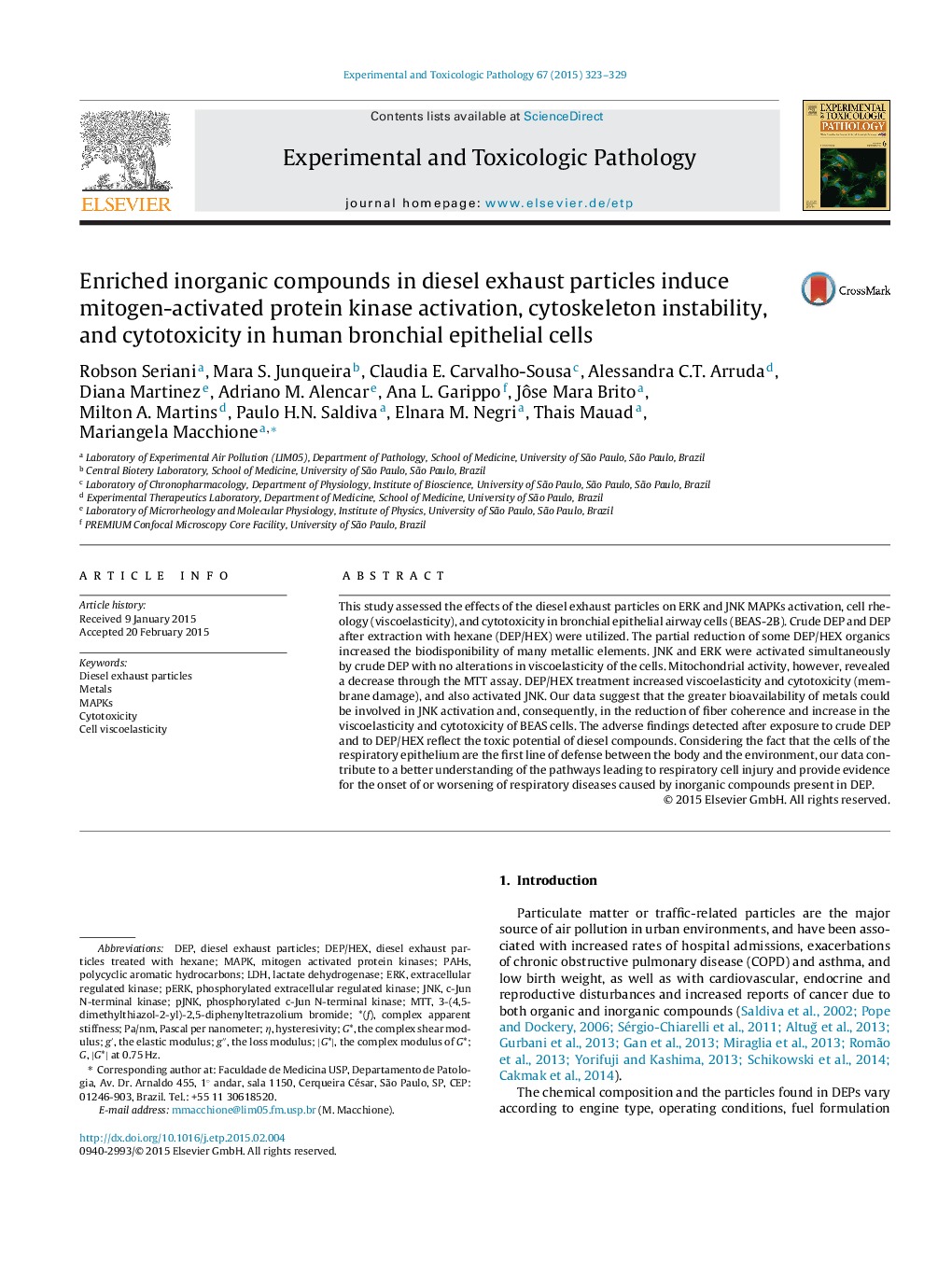| Article ID | Journal | Published Year | Pages | File Type |
|---|---|---|---|---|
| 2498852 | Experimental and Toxicologic Pathology | 2015 | 7 Pages |
•Diesel exhaust particles (DEP) induce ERK/JNK activation and cytotoxicity in airways cells.•DEP/HEX active JNK that alters cytoskeleton arrangement with increase of viscoelasticity of the cells.•Treatment of the DEP with hexane (DEP/HEX) causes inorganic enrichment in DEP.
This study assessed the effects of the diesel exhaust particles on ERK and JNK MAPKs activation, cell rheology (viscoelasticity), and cytotoxicity in bronchial epithelial airway cells (BEAS-2B). Crude DEP and DEP after extraction with hexane (DEP/HEX) were utilized. The partial reduction of some DEP/HEX organics increased the biodisponibility of many metallic elements. JNK and ERK were activated simultaneously by crude DEP with no alterations in viscoelasticity of the cells. Mitochondrial activity, however, revealed a decrease through the MTT assay. DEP/HEX treatment increased viscoelasticity and cytotoxicity (membrane damage), and also activated JNK. Our data suggest that the greater bioavailability of metals could be involved in JNK activation and, consequently, in the reduction of fiber coherence and increase in the viscoelasticity and cytotoxicity of BEAS cells. The adverse findings detected after exposure to crude DEP and to DEP/HEX reflect the toxic potential of diesel compounds. Considering the fact that the cells of the respiratory epithelium are the first line of defense between the body and the environment, our data contribute to a better understanding of the pathways leading to respiratory cell injury and provide evidence for the onset of or worsening of respiratory diseases caused by inorganic compounds present in DEP.
